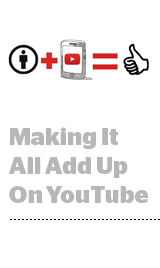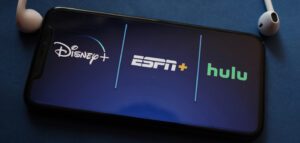 App developers are test-obsessed. They don’t spend a dime without knowing how it’ll turn out.
App developers are test-obsessed. They don’t spend a dime without knowing how it’ll turn out.
That could be part of the reason why they haven’t done much spending on in-app mobile YouTube pre-roll. Until recently, Google Analytics provided developers with feedback on things like rate of install, AdWords performance, how often an app is opened, the number of app sessions and other related information – but attribution was a challenge.
It’s one thing to know that a person installed your app – but it’s another thing to know where that person came from.
Google recently issued documentation that enables third parties to plug in and offer independent attribution for mobile video ads on YouTube. App attribution company TUNE, which rebranded from HasOffers in July, answered the call with an attribution solution for YouTube TrueView campaigns for iOS apps through an integration with Google AdWords. Other providers are sure to follow. [TUNE also offers iAd attribution, which rolled out in April.]
The tech is fairly simple: Once a campaign is running and an install occurs, TUNE’s MobileAppTracking platform pings YouTube, which in turn sends a postback over to TUNE to confirm the provenance of the install as coming from a particular YouTube ad. It fills a niche that needed to be filled, said TUNE’s CEO, Peter Hamilton.
“If I’m an app marketer, I can follow a person throughout their lifetime on my app and see important things, like how active they are, whether they make purchases, etc., but there was no way to reconcile their advertising across AdWords, YouTube and all of their other channels,” Hamilton said.
Although Google seems to do what it wants and though it’s not known for its transparency, Hamilton sees Google’s move to open up YouTube attribution to third parties as a good sign.
“By doing this, it feels like Google is trying to connect with the broader mobile marketing community,” he said. “Part of that is because they’re seeing marketers working with lots of different technology or even building their own, and generally trying to get smarter about user experience across channels and optimization.”
At the end of September, Google released an extension of the TrueView ads to make in-app video ads available via Google’s app advertising network, AdMob. According to Hamilton, a number of TUNE clients have been asking for YouTube attribution, especially as lifetime value is starting to become far more valuable than an install on its own.
“App developers have high hopes for YouTube because it’s the second-largest search engine – and a lot of user intent comes with that,” he said. “And video advertising is very effective tool on mobile. From an engagement perspective, in-app pre-roll is one of the best ways to capture a user’s attention.”
Updated 11/24/14
Mobile analytics company Apsalar is also working with Google to support YouTube attribution.












